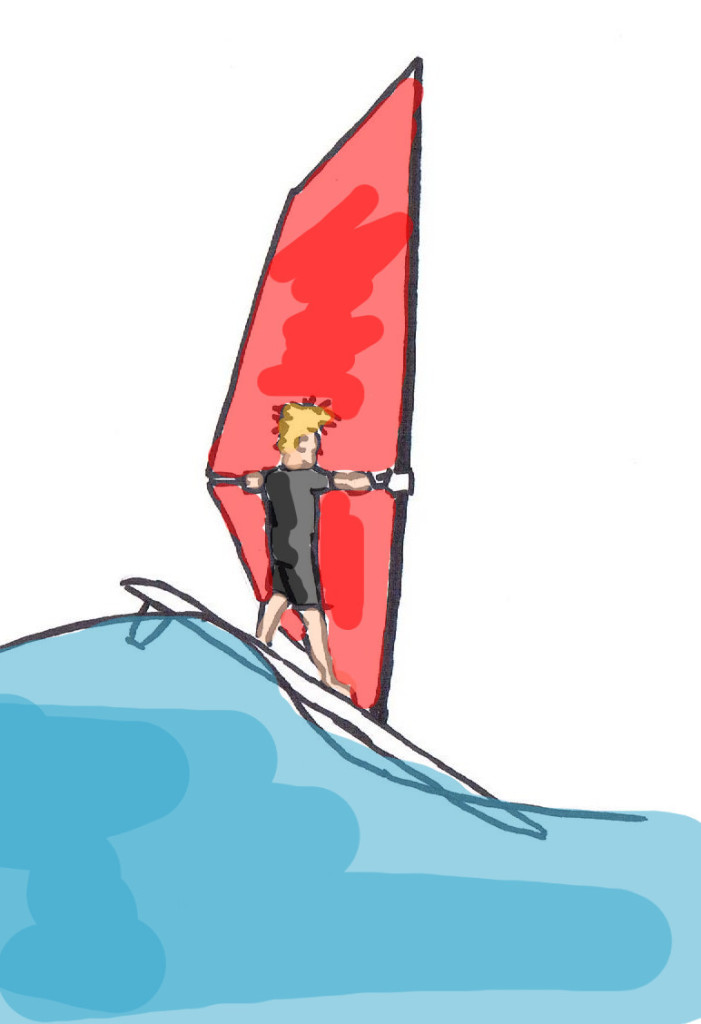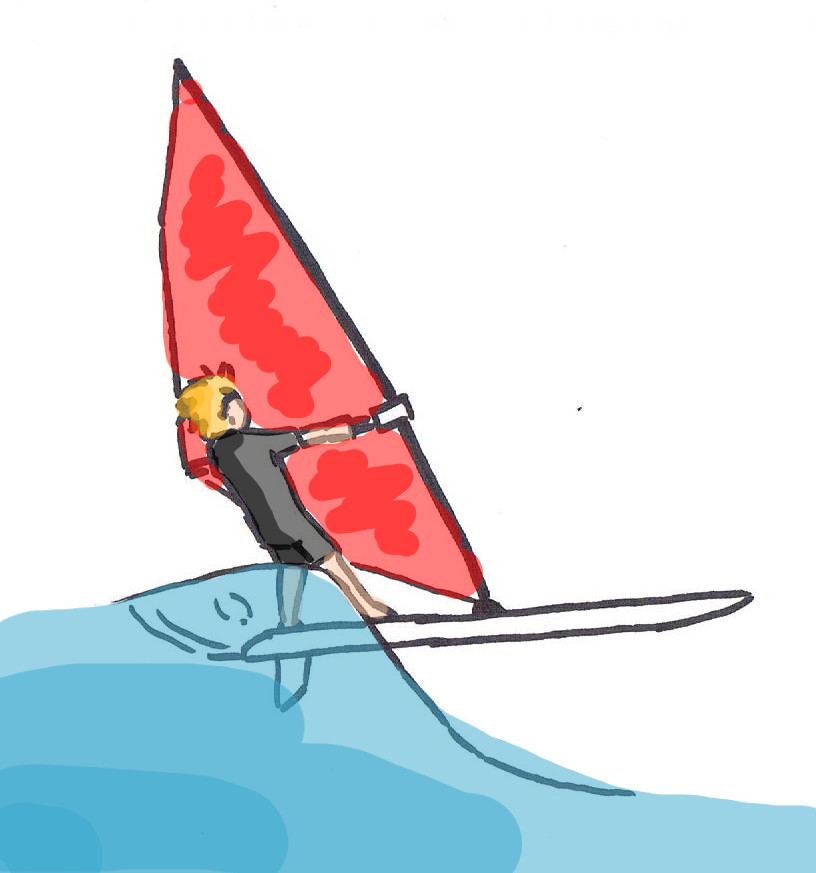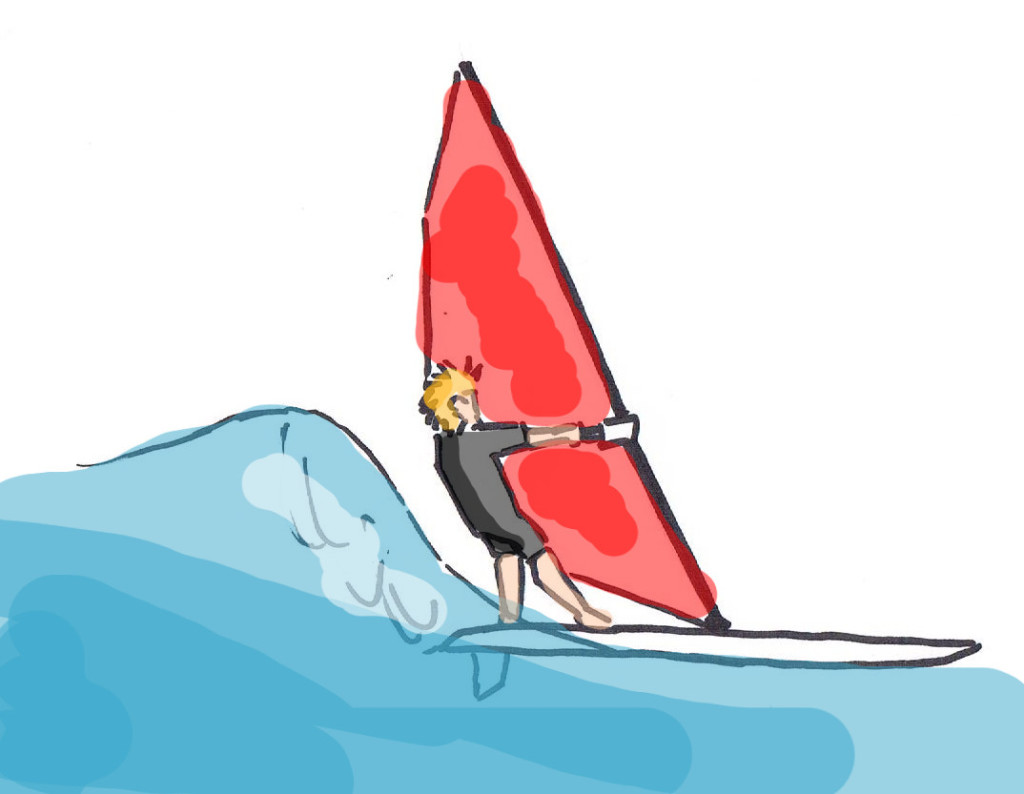One of the most fun parts of my beginner lessons is getting back to the beach at the end. No, not because I am desperate to end the lessons but because it gives my students the chance to ride a wave with a windsurf board. There is very little else that will get a beginner hooked to windsurfing than the sensation of gliding down a wave (except for when I pull them so that they start planing, which is basically the same sensation). There is however a very important element to riding a wave with big boards which will make or break the ride and that is making sure that the board does not dive underwater with either the nose or the leeward rail.
If you have had any bad experiences with this, be it with beginner boards or with smaller ones (I have also seen this happen to people on 120 litre boards) this post is for you. Here are the three things you need to watch out for if a wave builds up behind you and you want to surf it to the beach.
No skeg
If your board has a skeg (centerboard, daggerboard) this one is essential. When we catch the wave we pick up quite a lot of speed. So much speed in fact that the skeg, if it is out, will act like a hydrofoil, lifting the board out of the water and falling onto the lee side. I have not seen anyone regain control over the board once it does that. In short, once you approach the beach break, hide the skeg in the board.
Weight really far to the back of the board
This one is the second most imortant one. In the same way that a surfer has to take care not to do a nose dive on take off, we must also make sure that our windsurf board doesn’t dive into the bottom of the wave as we start to slide down it. The result is pretty predictable (and entertaining to watch): the nose dives in, the tail lifts up, the sailor gets catapulted over the board and falls in head first. Aside from annoying, this can also be quite dangerous.
Firstly because the water may not be that deep and we can seriously injure ourselves on the sand. Secondly, if we were going fast enough, or the wave is strong/big enough the board might topple over right on top of us. Things can turn pretty ugly if a 10-15 kilo board falls on top of you or get pushed ito you by a wave.
So: how to avoid this. Very easy, by keeping the boards’ nose up. To achieve this we must put our weight as far as possible to the back of the board. If this means having to move the feet right next to the tail of the board, so be it.
Sheet in
As with non-breaking waves, the wave will cause the board to move away sideways from under your feet. I have written a post on windsurfing in waves before so check out why you have to sheet by reading that post. In essence we need to make our body acompany the board as it accelerates down the wave and the only easy way to do that is by getting power in the sail (ie. sheeting in).
Bonus tip: if the wave doesn’t take you along
Sometimes we don’t get the timing right or the wave is just not big enough to take us along. If that is the case you need to be prepared to react to the board coming to a stop and the power in the sail increasing suddenly. The only way to avoid getting pulled over forwards is to sheet out as soon as you feel the power in the sail pulling you too much.
Let me know any other aspects of riding down waves with a beginner board you might have noticed by writing them in the comments below.









